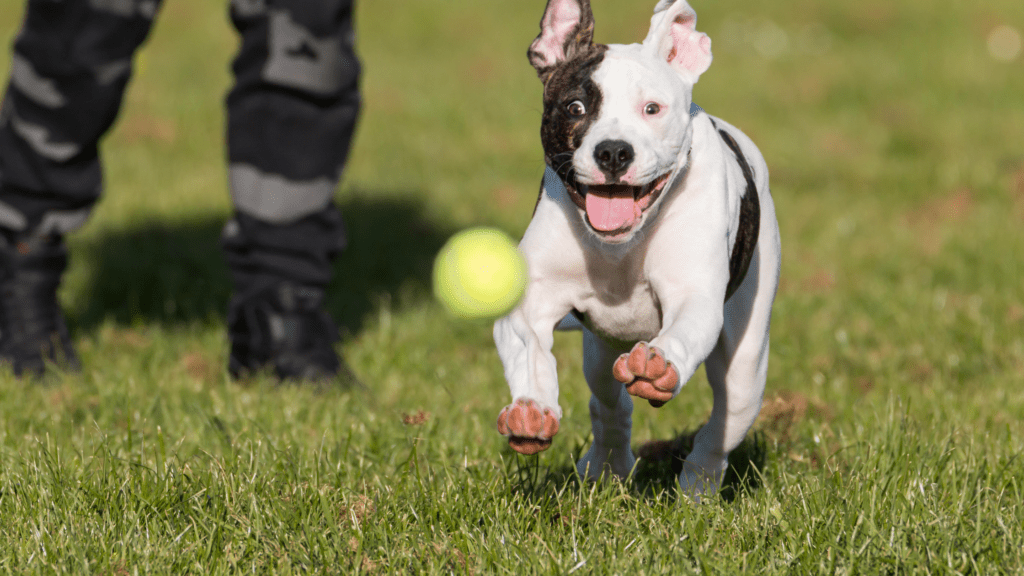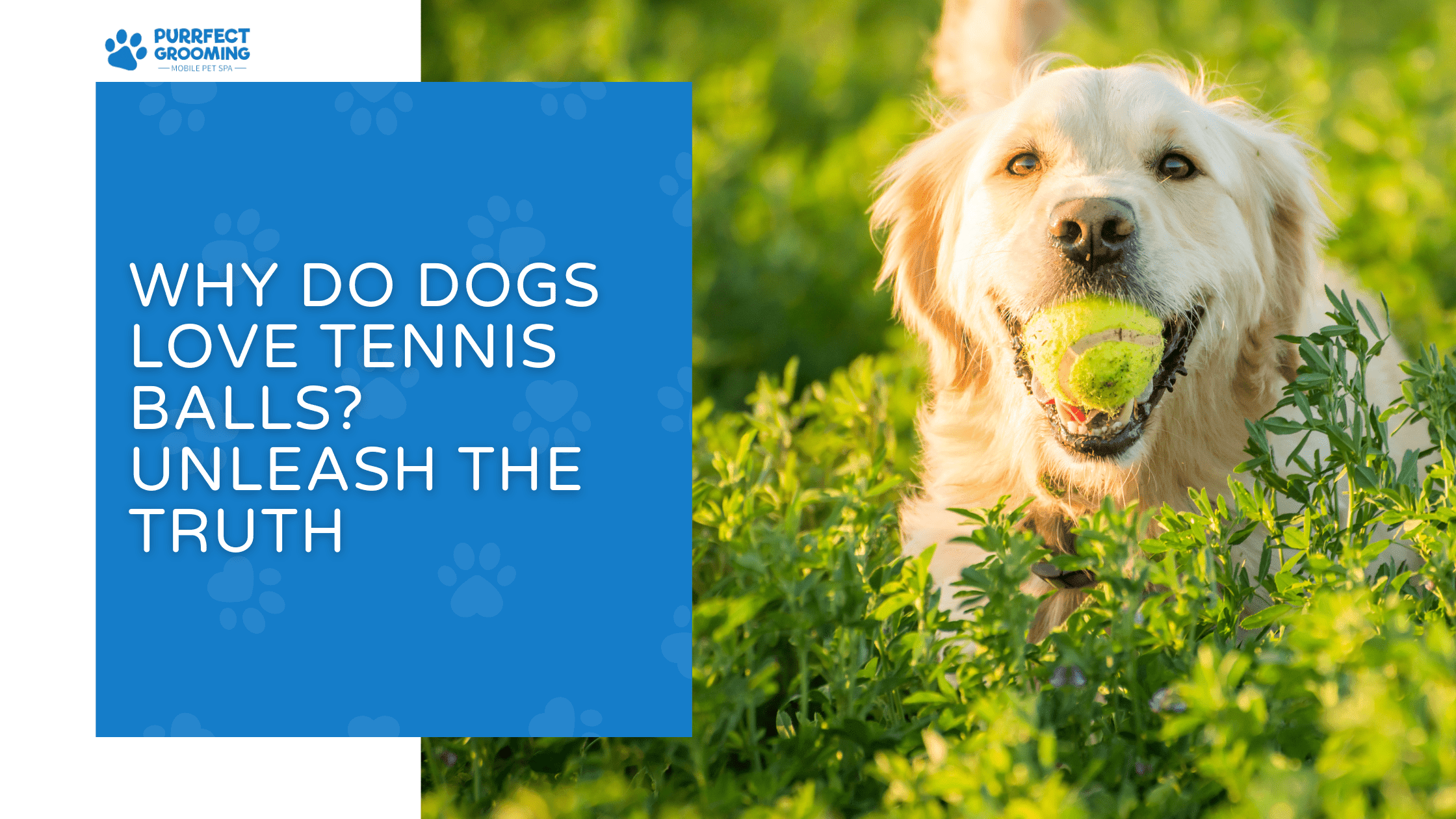Why Do Dogs Love Tennis Balls? Unleash the Truth
If you’ve ever caught your dog with tennis ball in their mouth, tail wagging like a metronome, you’ve probably wondered: why do dogs love tennis balls this much? It’s not just your dog; this obsession is widespread across breeds and temperaments. Dogs and tennis balls go together like peanut butter and jelly—naturally, effortlessly, and happily.
In fact, according to a 2023 report by the American Pet Products Association, over 56% of U.S. dog owners regularly purchase tennis balls for their pets, making it one of the most commonly owned toys in canine households. That number speaks volumes, not just about popularity but about the universal appeal of these fuzzy, bouncy spheres.
This article unpacks the compelling reasons why do dogs like tennis balls, exploring everything from evolutionary behaviors to emotional attachment, from dental stimulation to scent familiarity. Through each section, we’ll dig deeper into the instinctive, psychological, and physical reasons behind this special relationship. You’ll also find detailed comparison tables, practical tips, and a pro recommendation at the end to help you enhance playtime with your pup.
The Magical Bond Between a Dog and a Tennis Ball
To dogs, toys aren’t just inanimate objects—they’re companions, comforters, and in many cases, emotional lifelines. This is especially true with tennis balls. Many dogs form a strong bond with their tennis ball, carrying it from room to room, sleeping with it in their bed, or dropping it at your feet with that “play with me” look. Why? It often boils down to emotional conditioning. From an early age, when a dog is given a ball and receives positive reinforcement—praise, treats, or just the sheer joy of play—it builds a lasting emotional connection to that object. Over time, the tennis ball becomes more than a toy; it becomes a symbol of joy, connection, and reward.
| Emotional Element | Description | Impact on Dog Behavior |
| Comfort | Provides familiarity and emotional security | Reduces anxiety, promotes calmness |
| Attachment | Ball becomes a “favorite object” | Dog carries it around, guards it |
| Association | Tied to praise, play, and positive human interaction | Boosts engagement and emotional ties |
Instinctual Roots: Prey Drive and Chase Behavior
One of the most significant reasons dogs are magnetically drawn to tennis balls is rooted in instinct. Dogs are descendants of wild predators, and even the fluffiest lap dog retains a piece of that primal prey drive. A tennis ball mimics the size, movement, and unpredictability of small prey animals. When a ball is thrown and bounces erratically, it ignites that deep-seated impulse to chase and capture. This behavior isn’t just entertaining—it’s incredibly satisfying for dogs. It allows them to act on their evolutionary programming in a safe and playful environment.
| Trigger | Instinct Activated | Dog’s Response |
| Fast Movement | Prey drive | Chasing, pouncing, retrieving |
| Erratic Bounce | Hunt simulation | High engagement, focused attention |
| Retrieval or Fetch Play | Pack contribution instinct | Pride in bringing “prey” back to pack leader |
Texture and Size: Perfect Fit for a Dog’s Mouth
Unlike many plastic or rubber toys, tennis balls offer a unique combination of texture and size that perfectly suits most dogs. Their fuzzy coating is soft on the gums but still durable enough to withstand enthusiastic chewing. The standard tennis ball, about 2.7 inches in diameter, fits comfortably in the mouths of medium to large breeds, allowing them to grip, chew, and carry it with ease. That slightly gritty surface also massages the gums and provides a satisfying chew, especially for teething puppies or dogs with strong chewing instincts.
| Feature | Tennis Ball Benefit | Comparison with Other Toys |
| Size | Ideal for medium to large breeds | Smaller toys may be choking hazards |
| Fuzzy Texture | Feels good on gums, adds sensory feedback | Smooth toys may lack chew appeal |
| Compressibility | Satisfying resistance when bitten | Hard toys may hurt or bore the dog |
The Role of Scent and Familiarity
Dogs experience the world primarily through their noses. With a sense of smell that’s between 10,000 to 100,000 times more powerful than ours, dogs remember and emotionally respond to scent in incredible detail. A tennis ball, especially one that’s been played with frequently, becomes infused with the smells of the dog’s mouth, the grass, your hands, and everything else in its environment. This rich scent profile becomes deeply familiar and comforting. It’s one of the reasons a dog with tennis ball may choose it over a brand-new toy—they know that ball, they trust it, and it smells like home.
| Scent Source | Emotional or Behavioral Response | Familiarity Impact |
| Owner’s Hand Scent | Comfort and bonding | Strengthens emotional connection |
| Environment (grass, dirt) | Scent triggers play memory | Promotes territory association |
| Own Saliva Scent | Reinforces “this is mine” instinct | Increases attachment and possessiveness |
Interactive Play: Building Trust and Exercise
The act of playing fetch with a tennis ball is more than just a game—it’s a relationship-building exercise. When you throw the ball and your dog brings it back, you’re engaging in a ritual of cooperation and reward. Dogs thrive on this kind of interactive play. It satisfies their need for physical movement and social interaction, while also reinforcing your role as their trusted companion and provider of joy. Dogs that regularly engage in ball play tend to be more active, better socialized, and more responsive to commands.
| Play Benefit | Description | Long-Term Impact |
| Physical Exercise | Keeps the dog agile and fit | Reduces obesity and behavioral issues |
| Emotional Bonding | Increases affection and trust in the owner | Builds loyalty and responsiveness |
| Routine & Structure | Establishes consistent playtimes | Creates healthy behavioral patterns |

Chewing Satisfaction: Relief and Joy
Chewing is a natural and necessary activity for dogs. It relieves stress, helps with dental hygiene, and satisfies their need to explore with their mouths. Tennis balls offer a perfect chew texture: not too soft to be boring, and not too hard to be painful. That fuzz helps scrape off some plaque, although it’s no replacement for proper dental care. The act of chewing also releases endorphins, the “feel-good” chemicals that help dogs stay calm and relaxed.
| Chewing Need | Tennis Ball Feature | Benefit Provided |
| Gum Massage | Slight fuzz and compressible texture | Reduces teething discomfort |
| Stress Relief | Satisfying resistance under pressure | Releases calming endorphins |
| Dental Cleaning | Mild abrasive surface | Helps remove soft tartar |
Mental Stimulation and Problem Solving
Dogs need mental exercise just as much as they need physical activity. You can use tennis balls for hide-and-seek games, obstacle courses, or treat puzzles to challenge your dog’s mind. Activities like finding a hidden tennis ball or solving how to get it out from under the couch engage your dog’s problem-solving skills. These brain workouts are especially important for intelligent breeds that get bored easily, which can lead to destructive behavior.
| Activity Type | Mental Challenge Presented | Dog Benefit |
| Hide-and-Seek | Locating hidden ball using scent memory | Improves cognitive focus and recall |
| Obstacle Retrieval | Problem-solving in maneuvering objects | Boosts creativity and persistence |
| Treat-Puzzle Balls | Reward-based manipulation of tennis ball | Stimulates patience and logical thinking |
Why Dogs Prefer Tennis Balls Over Other Toys
Tennis balls check more boxes than most dog toys. They bounce unpredictably, feel great to chew, are easy to carry, and can be used for a variety of games. Unlike plush toys that can be shredded in minutes or squeaky toys that might irritate human ears, tennis balls provide a balanced sensory experience. The versatility of a tennis ball makes it a toy that fits virtually any play style, energy level, or mood.
| Toy Comparison | Durability | Multi-Sensory Appeal | Dog Preference Rank |
| Tennis Ball | Medium | High | ✅ #1 |
| Rope Toy | High | Moderate | #3 |
| Rubber Chew Toy | High | Low | #4 |
| Plush Squeaky Toy | Low | High (but short-lived) | #2 |
Common Risks and Precautions with Tennis Balls
Despite all their benefits, not all tennis balls are created equally safe. Standard tennis balls (meant for sports) can be too abrasive for regular chewing and may contain adhesives or materials not safe for dogs. In addition, if a tennis ball is too small, it can become a choking hazard, especially for larger breeds. Supervision is always key. Always opt for balls labeled “pet-safe” and regularly inspect them for wear and tear.
| Risk Factor | Description | Prevention Tip |
| Abrasive Material | Can wear down teeth over time | Use dog-specific tennis balls |
| Size Mismatch | Too small can lead to choking | Choose appropriate size for your dog |
| Loose Fuzz Ingestion | Can cause digestive upset if swallowed | Discard worn-out or shredded balls |
Conclusion: A Simple Toy With Big Impact
In the world of dog toys, tennis balls may seem basic, even boring. But once you dive into why do dogs love tennis balls so much, it becomes clear that this simple toy offers a world of value—instinctual satisfaction, emotional bonding, mental stimulation, and physical exercise. It’s no wonder the dog with tennis ball scenario is such a common, heartwarming sight. Whether it’s the texture, scent, bounce, or the bond it builds with you, tennis balls provide layers of engagement that go far beyond the surface. By understanding the “why,” we as pet owners can better appreciate this little green orb that brings such big joy.
But remember—while dogs and tennis balls are a match made in heaven, supervision and safety are still essential. Opt for dog-friendly versions and rotate toys regularly to keep things exciting. Whether it’s a game of fetch, a solo chew session, or a puzzle-solving moment, tennis balls have rightfully earned their place in your pup’s toy box.
Pro Tip:
Always keep multiple dog-safe tennis balls in rotation. This prevents over-chewing of a single ball and keeps the game exciting. You can even use a different scent on each ball (lavender, chamomile, etc.—pet-safe, of course!) to mentally stimulate your pup and keep their senses sharp.
FAQs
1. Why do dogs like tennis balls so much compared to other toys?
Dogs love tennis balls because they satisfy multiple instincts—chasing, chewing, carrying, and problem-solving. The fuzzy texture, perfect size, erratic bounce, and familiarity with the scent all contribute to this toy’s lasting popularity.
2. Is it safe for dogs to chew on tennis balls?
Yes, but only if the tennis ball is made specifically for dogs. Regular tennis balls (made for sports) can have abrasive surfaces and adhesives not suitable for pet use. Always opt for pet-safe versions and supervise your dog during play.
3. Can tennis balls help with my dog’s anxiety?
Absolutely! Many dogs use their favorite tennis ball as a form of emotional comfort, especially during stressful situations like vet visits or thunderstorms. The familiar texture and scent offer security and a distraction from anxiety.
4. Do all dogs enjoy tennis balls?
Not necessarily. While most dogs do love tennis balls, especially retrievers and high-energy breeds, some may prefer plush toys, tug ropes, or squeakers. It depends on your dog’s personality, breed, and play style.
5. How can I make tennis ball play more engaging?
Use them in games like fetch, hide-and-seek, or even create a mini obstacle course. You can also stuff treats in tennis balls cut open slightly or play fetch near water for swimming dogs. Variety keeps the toy fresh and exciting.

